Store Hours: Monday thru Friday | 9:00 AM - 5:00 PM CST | Saturday Closed from October thru February | Closed on Sunday
Golf Club Repair & Refinishing
Selected by CityPages as
"Best Golf Shop"
Blog Layout
DO YOU WANT TO HIT LONG, OR STRAIGHT?
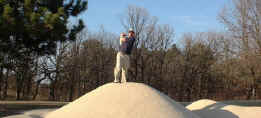
In a never ending search
for a better golf game, customers show up in droves this time of year seeking a better shaft. This Holy Grail quest, while not limited to driver shafts, is most often focused Sandy.JPG (64047 bytes)there. The principles we will explore this month apply to all the clubs, but we'll examine specifically how they pertain to the big stick: the driver.
The golfer looking to upgrade
their driver shaft should first determine what their priorities are. My first question to them invariably is: "Are you looking to hit it farther or straighter?" Their response is predictable: "both." Unfortunately, the cruel reality is these two goals are often mutually exclusive (unless the golfer was very
poorly fit with the existing shaft).
HIT IT LONG:
Distance=Mass x Velocity Squared
is a time-tested scientific principle which also applies to golf. To increase distance of your shots, you must either increase the mass (weight) of the club or increase the velocity (club head speed) of your swing. Many golfers mistakenly believe they're addressing the increased mass issue when they get a larger volume titanium head. In truth, today's larger titanium heads weigh virtually the same as the old wooden ones, approximately 198 grams. Furthermore, increasing the static weight of the club has proven to be counterproductive because it decreases club head speed. The only effective way to increase the distance of your shots is to increase that speed with a longer
and lighter
shaft. The downside of this combination is an almost inevitable loss of control.
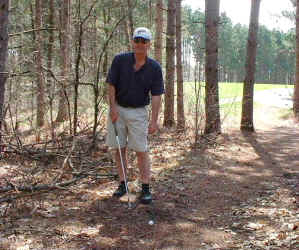
HIT IT STRAIGHT:
Physics dictate that the further from the hands the ball is, the more likely a strike OB-1.JPG (146040 bytes)will miss the center of the clubface. A shot struck just 1/2" off the sweet spot will negatively impact not only the direction but also the distance achieved. If your goal is to stay in the fairway as much as possible, then reduce the shaft length and increase the shaft weight of your driver. It is ironic that the pros, who are the best ball strikers in the game, tend to use drivers a full inch shorter than the average golfer.
Just for fun, pull out that old persimmon or laminated maple 43" steel-shafted driver you've put
away and see if your ball doesn't stay in the fairway more often.
POINT OF DIMINISHING RETURNS:
Golfers need to experiment with shaft length and weight in order to determine what what is best for their tempo and ability. That 46 inch, 52 gram graphite shaft may yield excellent distance and adequate control for a well-tempoed disciplined player. However, most will need to find a shorter length shaft to keep them on those tight fairways, even if it means sacrificing those extra 15 yards from the occasional perfect strike. Decide what your game will tolerate: 40% of fairways hit and 15 extra yards, or 80% of fairways hit and 15 less yards.
THE SOLUTION:
Golf retailers will love the answer to this dilemma: serious players as well as weekend warriors should have two
drivers. A shorter (i.e., 43 1/2"), possibly steel shafted club to be used on narrow fairways, when money is on the line, or when you are not at the peak of your game. Plus a longer 45" or 46" graphite shafted driver to pull out for those courses with wide open fairways, when you're in scramble tournaments, or when you are playing extremely well.
Remember, just because
you have terrific success with that new driver today does not guarantee that it will be successful for long. Give yourself an option for those slumps that everyone goes through.

By Admin
•
11 Mar, 2020
Are you confused about the significance of the many terms and measurements thrown at you by the golf club manufacturers and salespeople? Join the club! We finally begin to grasp a rudimentary understanding of "shaft spining" and suddenly "COR" becomes critical. No sooner does that term become part of our lexicon when "MOI" makes an appearance. Each of these effects can be measured by sophisticated scientific equipment, but I contend a well-struck ball is more of an art than a science.
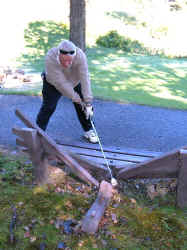
By Admin
•
05 Mar, 2020
Most likely the arrow. Tom King 2.JPG (125121 bytes) If it was the Indian, Tiger could compete using a motley assortment of rental clubs, right? Practically speaking, if your handicap is 20 or better, then using properly fitted equipment is vital to your performance. Above a 20, then the rental clubs are "same difference."
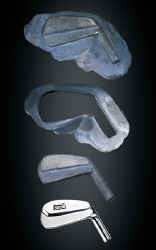
By Admin
•
05 Mar, 2020
KZ Golf has found a niche with the custom pro line , a hallmark of component golf club heads. KZG Forging.jpg (24395 bytes)From the casual golfer to the accomplished player, there is a KZG model made to suit your game. All of the KZG forged iron manufacturing processes: forging, grinding, plating and polishing are done solely in Japan, where the highest quality and attention to detail are the industry standard. Essentially, all the finished forged and cast heads come directly to us, where we'll fit you with the appropriate shaft and install it professionally. Your savings are substantial because you've avoided the middleman (think: retailer). You'll be the owner of beautiful custom made clubs that rival any in the golf business, and a great deal to boot.
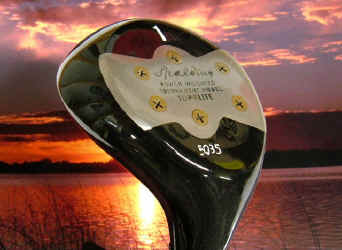
By Admin
•
05 Mar, 2020
We see a lot of dusty relics from the 1930's and 40's, and there are more of them out there than you would think. A common belief is because the clubs are old, then they must have value. Like all collectibles, a golf club is only worth what one is willing to pay, and more often than not the cost of refinishing will exceed its value.
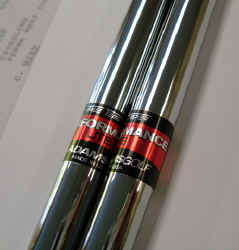
By Admin
•
05 Mar, 2020
Stepping shafts is a method of reshafting that focuses on a flex between the specific designations, say, between a regular and a stiff flex. "Hard stepping" would make a shaft stiffer, "soft stepping," more flexible. The effective change in flex between immediate lofts from stepping is 1/3, or 5 cycles per minute, a practically negligible change in performance for most golfers.
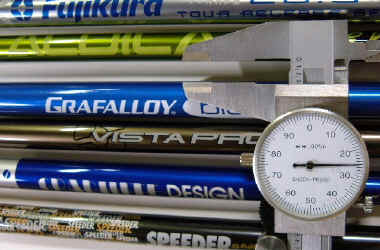
By Admin
•
05 Mar, 2020
This falls under the category of: "If you think it helps you, it will." The principle is sound, but whether it is practical for most golfers is a different story. Spining is another entry in the long line of "new" innovations in the golf industry that aren't really new at all, such as bore-thru heads, shaft butt-weighting, freezing, shock absorbing, and magical pendants. The TrueTemper Company espoused spining in the 1970's with very limited success, and there is a good reason why. No two golf shafts are identical nor perfectly round, and there is usually an almost imperceptible seam or spine resulting after manufacture. A metal shaft is welded along its axis, but the resulting torque is so low on a metal shaft that any resulting spine effect is practically inconsequential. A graphite shaft is produced by the wrapping of several layers, or plies, all beginning and ending at different points to form the body of the shaft, leaving several seams present. Shaft manufacturers have made great strides towards perfecting consistency and have nearly eliminated any weak or strong sides of the graphite shaft, effectively negating the need for spining.
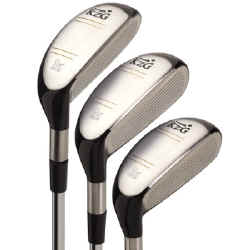
By Admin
•
05 Mar, 2020
One of the few innovations in golf equipment in recent years that has real merit is the "hybrid" golf club. Hybrids KZG Hybrids.jpg (17882 bytes)combine features of both woods (cambered sole, larger head, roll and bulge) and irons (heavier weight and shorter shaft). A hybrid tends to be easier to hit than the testy long iron, usually the nemesis for all but the strongest, most precise player.
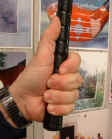
By Admin
•
28 Feb, 2005
While regripping is a common repair at any time of year, it always peaks in the spring. Many golfers will show up over the next few months requesting new grips and, often times, will believe they need a larger size. Some have tried their buddy's clubs with the bigger grips and enjoyed the comfortable GripSize1a.JPG (43273 bytes)feel. Other times they want to 'demonstrate' to me their need for a larger grip. They hold the club head up with the shaft perpendicular to the ground while squeezing their fingers into the palm, as shown at left. The problem with this method is that a golfer rarely has to hit a shot from a lie 3 feet over their head! I have a relatively small hand and yet can easily dig my fingers into my palm when held in this manner, even using this oversized GripSize1b.JPG (47440 bytes)grip. In the actual playing position, seen at left, our hands at address are naturally elongated down the (proper size) grip, and we are hopefully holding it only lightly.
CONTACT INFORMATION
Phone:
(612) 825-5389
Email:
golfclubhospital@gmail.com
Address: 4308 Bryant Ave South Minneapolis, MN 55409
Store Hours:
Monday through Friday
9:00 AM to 5:00 PM CST
Saturday
9:00 AM to 12:00 Noon CST (Sporadic from October 1st to January 1st)
Closed Sunday
Store Hours:
Monday through Friday 9:00 AM to 5:00 PM CST
Saturday
9:00 AM to 12:00 Noon CST (Sporadic from October 1st to January 1st)
Closed Sunday



OUR LOCATION
Content, including images, displayed on this website is protected by copyright laws. Downloading, republication, retransmission or reproduction of content on this website is strictly prohibited. Terms of Use
| Privacy Policy